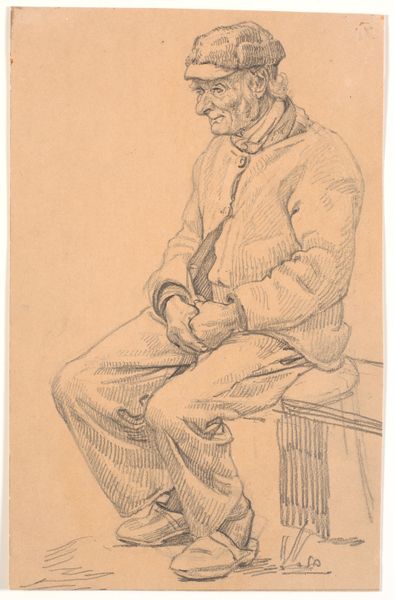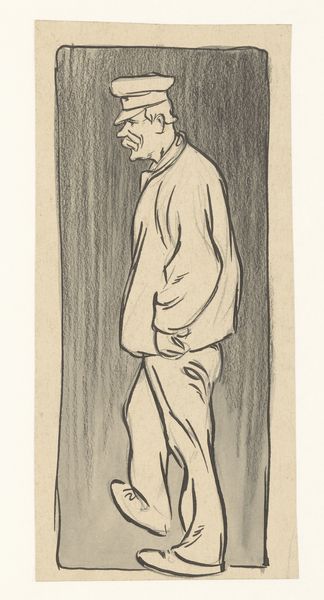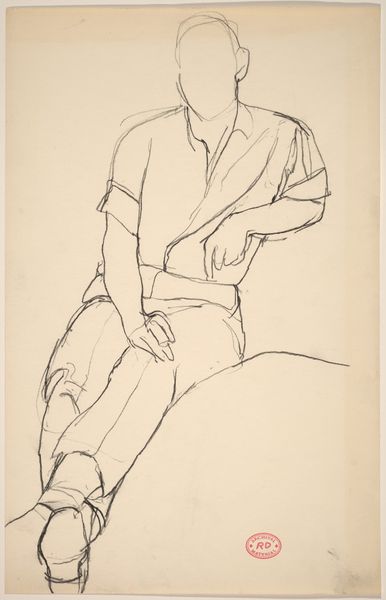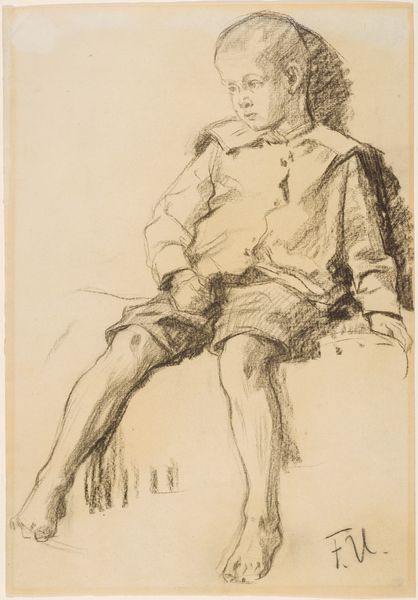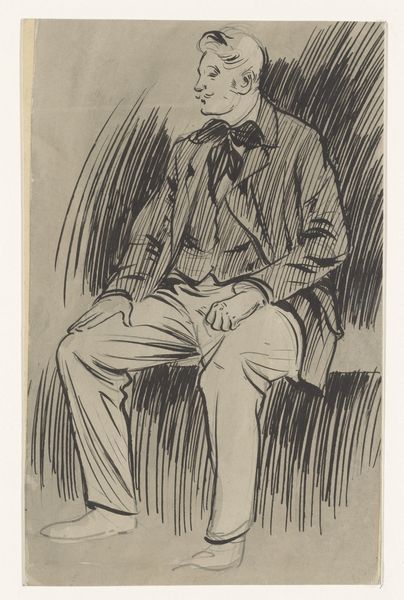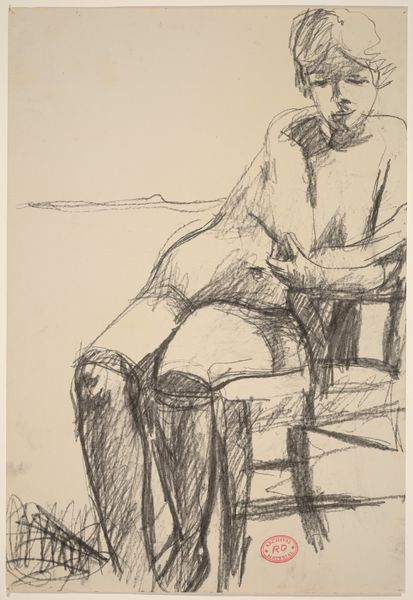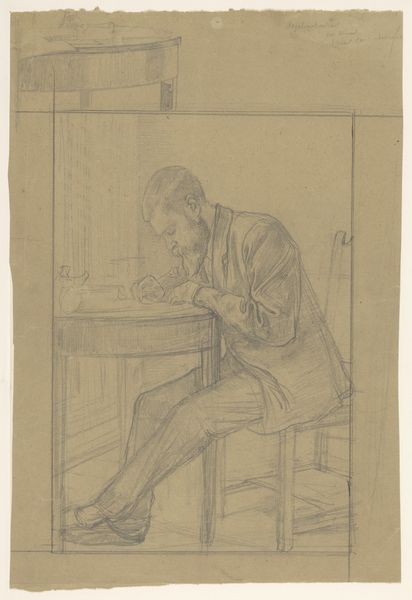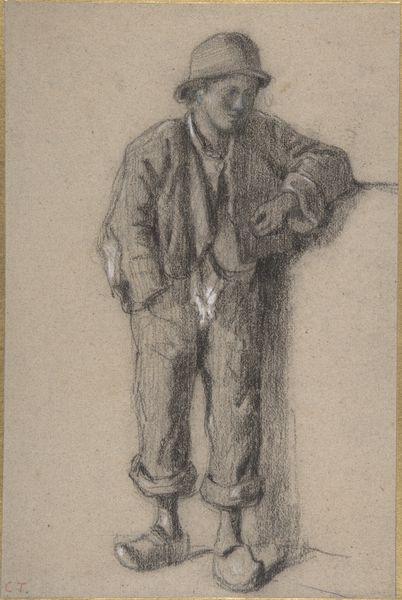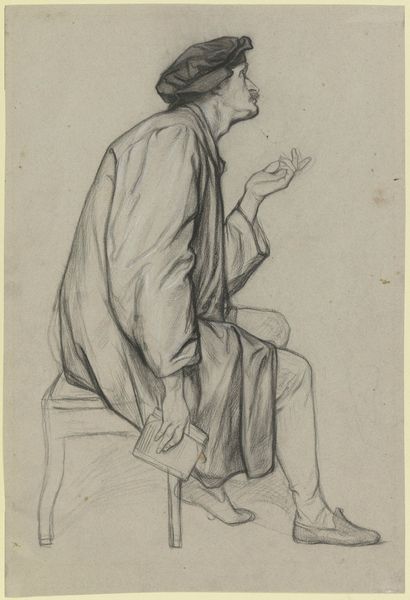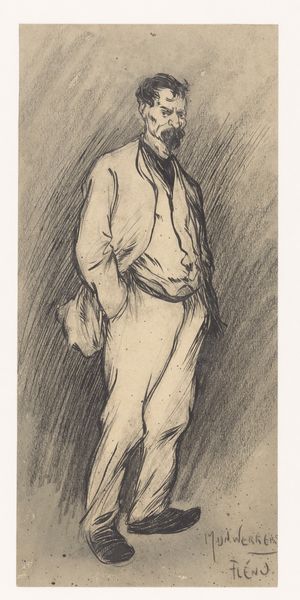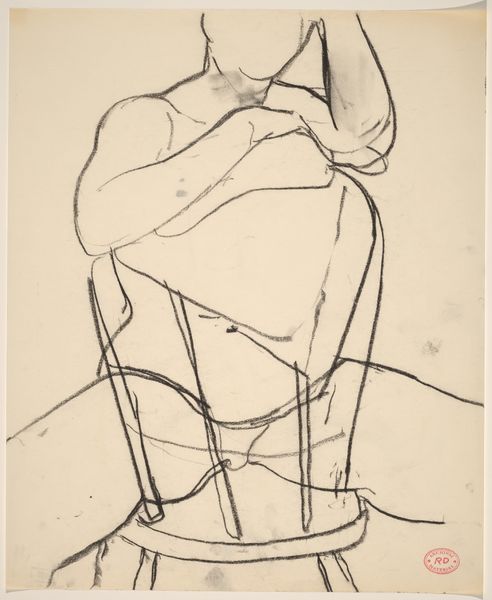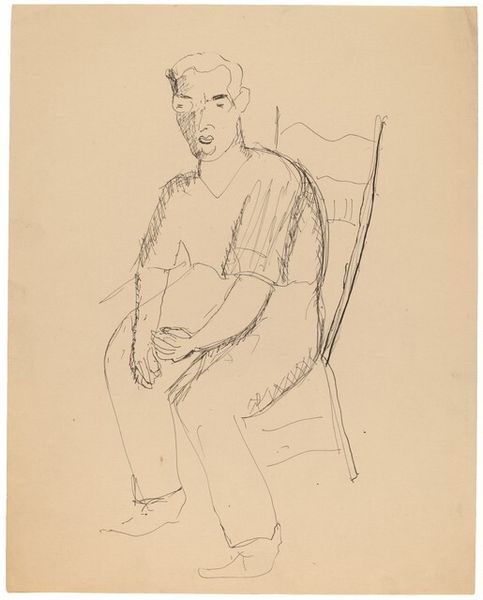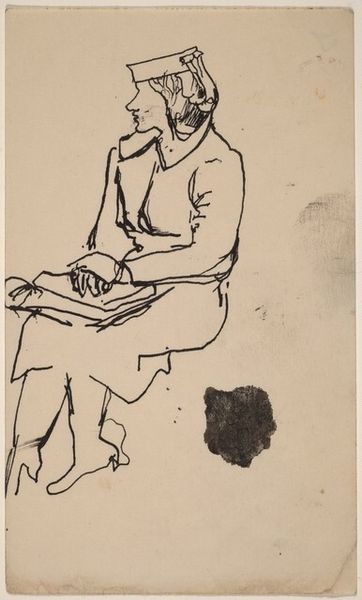
drawing, pencil
#
portrait
#
drawing
#
light pencil work
#
pencil sketch
#
figuration
#
personal sketchbook
#
idea generation sketch
#
ink drawing experimentation
#
pen-ink sketch
#
pencil
#
sketchbook drawing
#
portrait drawing
#
pencil work
#
sketchbook art
#
realism
Dimensions: height 540 mm, width 305 mm
Copyright: Rijks Museum: Open Domain
Curator: Here we have Henk Henriët’s 1933 pencil drawing, “Zittende man op een stoel,” which translates to "Sitting Man on a Chair". The piece is now held here at the Rijksmuseum. Editor: My first impression is a sense of quiet observation. The man seems captured in a moment of repose, yet his eyes suggest a deeper thoughtfulness or perhaps even anxiety. The limited tonal range makes it seem melancholy, almost ghostly. Curator: It’s interesting that you pick up on a sense of anxiety. The 1930s were a period of immense socio-political change and economic hardship worldwide. Realism, as we see in this work, sought to capture everyday life and this, implicitly, included everyday anxieties. Editor: Absolutely. And you can see a sort of raw honesty in the lines. Henriët hasn’t idealized the man; he presents him plainly, with an emphasis on light and shadow to define form. This, to me, reflects a broader working-class consciousness prevalent during that time. How might the everyman respond to the tumultuous social dynamics, that’s the question that’s in my head. Curator: The simplicity of the chair is also significant, reflecting, perhaps, a common domesticity. The composition does away with extraneous details; everything serves to focus on the subject's psychological state. In terms of its historical position, it represents a clear moment of social realism asserting itself as a force in Dutch art between the wars. Editor: His posture, the way he grips the back of the chair...it all contributes to this feeling. He's contained, but it's not necessarily peaceful. I think that's the strength of Henriët’s portrait: that ability to convey so much with seemingly so little. I mean, this is pencil on paper! Curator: Exactly, it reveals the expressive potential within the mundane, turning a simple drawing into a subtle but impactful historical document. Editor: A testament to art's capacity to capture not just appearances, but the complex emotional undercurrents of an era. Curator: Agreed. It’s a reminder that portraiture extends far beyond physical likeness. Editor: A potent portrayal, leaving us pondering about those quieter moments that history often overlooks.
Comments
No comments
Be the first to comment and join the conversation on the ultimate creative platform.
